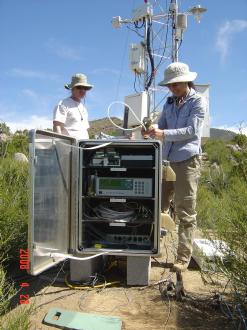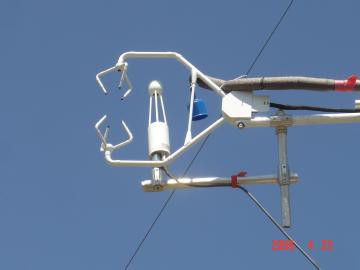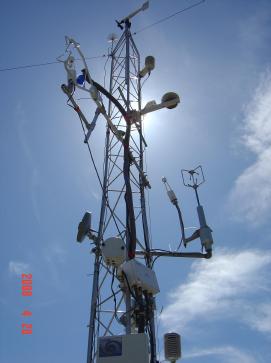
|
|
|
|
May 16, 2008
AmeriFlux Intercomparison at HPWREN-connected SDSU Sky Oaks Field Station By Dr. Hongyan Luo, Oregon State University, AmeriFlux QA/QC lab An AmeriFlux intercomparison was conducted by Dr. Hongyan Luo at the Sky Oaks Field Station's Old Stand site from April 18th to 28th, 2008. Sky Oaks is an HPWREN-connected ecological reserve within the San Diego State University's Field Stations Program. Eddy covariance instrumentation was compared side by side between the portable system from AmeriFlux Quality Assurance and Quality Control (QA/QC) lab and Sky Oaks instrumentation maintained by the Global Change Research Group (GCRG) at San Diego State University. The parameters involved in the comparison include CO2 concentration, water vapor concentration, temperature, incident radiation, net radiation, photosynthetic active radiation, wind statistics, carbon flux, water flux and energy flux. Hongyan Luo has been a PhD student at SDSU, and worked for Dr. Walter C. Oechel as part of the Global Change Research Group in the Biology Department. She graduated in 2007 and now works as a research associate with the AmeriFlux QA/QC lab at Oregon State University.
The AmeriFlux network was established in 1996. The network currently includes more than 100 sites across the country. It provides continuous observations of ecosystem level exchanges of CO2, water, energy and momentum, and is spanning diurnal, synoptic, seasonal, and interannual time scales using eddy covariance techniques. As part of Hongyan's job, she relocates a set of standard, well-calibrated eddy covariance instrumentation, traveling from site to site across the country. She then conducts side-by-side field comparisons to track sensor functions in addition to the comparison of software and methods of data processing. This will ensure that the measured results from various instruments and various locations are comparable. From her brief analysis, Hongyan showed Joe Verfaillie, the lab manager of the GCRG, that the preliminary results compared reasonably well with the AmeriFlux standard. The data status during the comparison must be checked daily to ensure data quality. This task is normally done manually in the field. However, HPWREN and its fast network speed enabled Hongyan to check the 20 Hz raw serial data any time from her hotel room in Temecula via the Internet, connecting to the site, more than 30 miles away. Hongyan appreciated the convenience and the time-savings of advanced networking technologies. |


